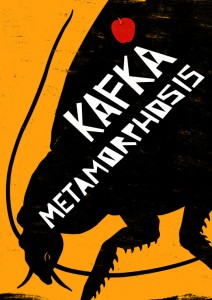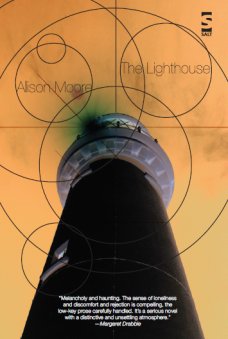by Bryan C. Johnson, Colorado Review associate editor

I’ve been working on a piece of fiction that’s starting to enter the scary no-man’s-land between the novel and the short story. “When a writer approaches the 20,000 word mark,” Stephen King says in the introduction to Different Seasons, “…he knows he’s edging out of the country of the short story; likewise when he passes the 40,000 word mark, he’s edging into the country of the novel.” I feel like I need a map. This non-country functions as a kind of borderland where elements of the novel and elements of the short story combine into something entirely different from either. Call it what you want—novella, short novel, novelette—the literature of the border refuses to be pinned down.
The novella occupies a strange space. As a form, it represents a middle ground between the short story and the novel but seems to emphasize the strengths (or weaknesses, depending on who you ask) of both. The early 20th century is riddled with famous novellas—The Turn of the Screw, The Old Man and the Sea, Metamorphosis—and people are still writing, publishing, and reading novellas in 2014. Yet, the novella has a checkered reputation. Pulitzer Prize winner Katherine Anne Porter, who wrote many novellas during her lifetime (Noon Wine; Pale Horse, Pale Rider), preferred to call them “short novels,” saying that “novella” was a “slack, boneless, affected word that we do not need to describe anything.” On the other hand, some writers, like Ian McEwan, see the novella as “the perfect form of prose fiction. It is the beautiful daughter of a rambling, bloated ill-shaven giant (but a giant who’s a genius on his best days).”
 As for the business side of things, novellas have traditionally been overlooked by publishers because their short length typically doesn’t justify the overhead needed to publish them. While commercial publishers seem to shy away from novellas, the rise of self-publishing and the e-book may have contributed to a recent upswing in their popularity. Paul Harding’s Tinkers won the Pulitzer Prize in 2010. The Booker Prize shortlisted at least two novellas (Swimming Home; The Lighthouse) in 2012 and another novella, The Sense of an Ending, won the award in 2011.
As for the business side of things, novellas have traditionally been overlooked by publishers because their short length typically doesn’t justify the overhead needed to publish them. While commercial publishers seem to shy away from novellas, the rise of self-publishing and the e-book may have contributed to a recent upswing in their popularity. Paul Harding’s Tinkers won the Pulitzer Prize in 2010. The Booker Prize shortlisted at least two novellas (Swimming Home; The Lighthouse) in 2012 and another novella, The Sense of an Ending, won the award in 2011.
But what exactly is a novella? Some people use page count to separate a novel from a novella–20,000 to 40,000 words seems to be the closest thing to an accepted standard length–but there is no hard and fast rule. Complicating matters is the fact that many publishers don’t use the word “novella” to describe works that, length-wise, might fit the description. The consensus among critics and writers seems to be that the essence of the novella is not in its size. George Fetherling says that calling a novella a novel that isn’t long enough is “like insisting that a pony is a baby horse…The novella isn’t simply longer than even a long short story and shorter than a novel, it’s also more complex than the first but not so complex as the second—in structure, in characterization: the works.”
 Length may not be the only defining criteria for a novella, but the restrictions created by that length may create the peculiar blend of characteristics that sets the novella apart from either the novel or the short story. “It is not, in my view, a matter of word count,” says Nicholas Royle, the fiction editor of Salt Publishing. “The Lighthouse is not a novella. It is a novel. It’s a short novel. A novella, I was taught by my German lecturers at university, is a novella because it has a tighter focus. It’s about one thing and probably only really about one character. It may have unity of place, too.” A novel’s scope is usually too broad (McEwan’s bloated giant) to accommodate this tighter focus, while a short story can leave no room for both a complex sense of character and place. In his New Yorker article, McEwan claims that the 20,000 to 40,000-word “architecture of the novella is one of its immediate pleasures” because it is “long enough for a reader to inhabit a world or a consciousness and be kept there, short enough to be read in a sitting or two and for the whole structure to be held in mind at first encounter.” In this sense, the novella could be considered an example of form defining content…or is it the other way around?
Length may not be the only defining criteria for a novella, but the restrictions created by that length may create the peculiar blend of characteristics that sets the novella apart from either the novel or the short story. “It is not, in my view, a matter of word count,” says Nicholas Royle, the fiction editor of Salt Publishing. “The Lighthouse is not a novella. It is a novel. It’s a short novel. A novella, I was taught by my German lecturers at university, is a novella because it has a tighter focus. It’s about one thing and probably only really about one character. It may have unity of place, too.” A novel’s scope is usually too broad (McEwan’s bloated giant) to accommodate this tighter focus, while a short story can leave no room for both a complex sense of character and place. In his New Yorker article, McEwan claims that the 20,000 to 40,000-word “architecture of the novella is one of its immediate pleasures” because it is “long enough for a reader to inhabit a world or a consciousness and be kept there, short enough to be read in a sitting or two and for the whole structure to be held in mind at first encounter.” In this sense, the novella could be considered an example of form defining content…or is it the other way around?
For many writers, the content of their novellas could not exist in any other form. Katherine Anne Porter mentions that she tried to write her first non-short novel, Ship of Fools, as a short novel, but “it just wouldn’t confine itself.” In an interview with the Paris Review, Amy Hempel describes the moment she knew Tumble Home was going to be longer than her typical short story: “I’d written a sentence. Then I wrote a second sentence…I knew it had a feel to it that was longer, and bigger, and my heart sank.” For her, a novel would require a “daunting” amount of “things you have to keep bringing forward over time,” whereas the concise length of Tumble Home allowed her to create a more “intuitive” piece. For Emmanuel Carrère (The Mustache), writing the novella was a “jubilant” experience that mirrored the pace of the piece itself: “Every day I wrote a day in the life of the character without knowing what would happen next. I’d go to bed thinking, We’ll see what happens tomorrow. It was completely improvised, and I was surprised until the very end.” A novel-length version of The Mustache probably wouldn’t retain the headlong quality of the original.
I started this blog post hoping to get some direction for the piece of fiction I’m working on. I thought that once I figured out what exactly a novella was, I could decide if it was the right form for my story, like trying to choose a car based solely on the cupholder-to-passenger ratio. Does it qualify as a novella? Should I expand it into a novel and risk bloat, or condense it to a short story and risk ham-fisted simplicity? Does it matter that it’s not quite 20,000 words and probably won’t stretch to 40,000? Is it a problem that there’s more than one main character, more than one issue explored? In the end, none of my questions were answered because the novella defies these sorts of categorizations. The borderland between the novel and the short story appears to be ruled by anarchy, but isn’t anarchy exciting?